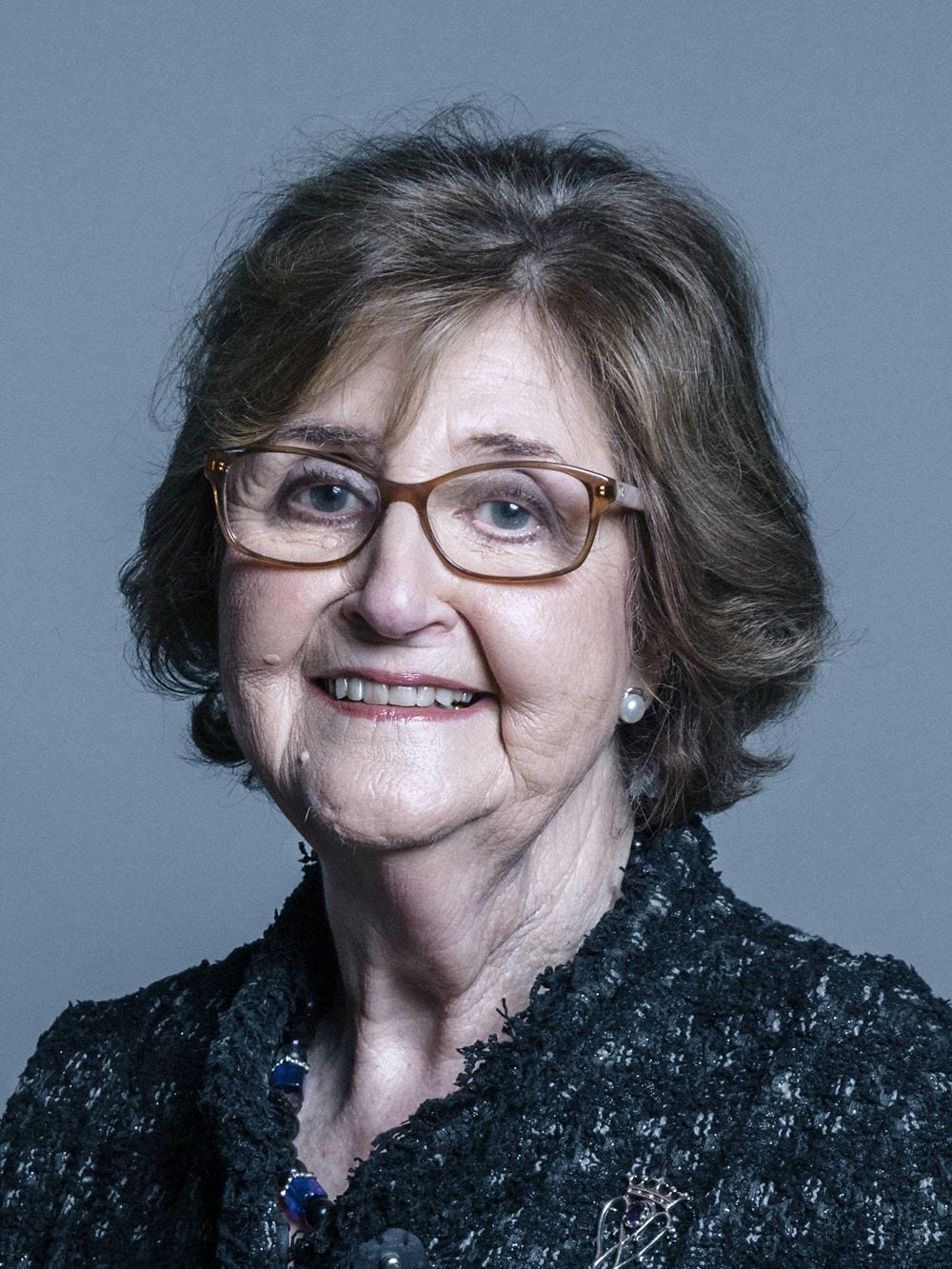Baroness Meta Ramsay (UK Parliament, CC BY 3.0)
The University of Glasgow’s student newspaper, the Glasgow Guardian, has published an intriguing interview with Baroness Meta Ramsay, a Labour peer and former MI6 officer.
Ramsay’s career has long provoked interest among spookwatchers on the British left, who have wondered whether some of her Labour contemporaries at Glasgow might also have had intelligence links.
Ramsay firmly dismisses this interpretation of her MI6 recruitment:
It had absolutely nothing to do with Glasgow University. Sometimes people ask because they’ve read all these things about Oxford and Cambridge tutorials, the classic idea from all these novels and things. That your tutor tapped you on the shoulder. At Glasgow University we didn’t have tutorials and glasses of sherry and people tapping you on the shoulder.
While this seems credible, the preceding passage warrants more qualification:
Some journalists have suggested circles Ramsay was involved in during her time at university, particularly in her role as President of the Scottish National Union of Students, were CIA and MI6 fronts used to recruit for the intelligence services – a claim Ramsay dismisses as rubbish.
This formulation is perhaps easy for Ramsay to reject. Words like ‘front’ tend to make intelligence scholars reach for the word ‘nuance’. Much work on the Cold War era has focused on demonstrating the agency exercised by people in organisations with intelligence links. That does not mean such links were not significant.
The big picture is now well-known. During the Cold War, any civil society organisations which organised on an international basis were liable to be caught up in the struggle for influence between east and west.
Many organisations formed in the short interval of internationalist idealism at the end of the Second World War split by the end of the 1940s. In the labour field, for example, the British Trade Union Congress and the American CIO walked out of the World Federation of Trade Unions to create the rival International Confederation of Free Trade Unions.
Something similar happened in the international student movement, where the International Union of Students saw a US-led breakaway to form the International Student Conference (ISC). Yet another parallel split happened in the closely related youth movement, with the World Assembly of Youth breaking from the World Federation of Democratic Youth.
The US and UK governments were neither indifferent to nor inactive in these developments. By the 1950s, the CIA had an International Organizations Division specifically designed to conduct this dimension of the Cold War struggle.
It was in the student movement that the CIA role first came to light. In 1967, Ramparts magazine famously exposed CIA funding of the ISC’s American affiliate, National Student Association (NSA). The resulting publicity contributed to the ISC’s collapse by 1969, the same year Ramsay officially joined the diplomatic service.
According to Stephen Dorril, Ramsay had been associate Secretary of the Leiden-based ISC in 1962, after heading the Scottish NUS (ref 1, p.475). During this time, the ISC was dependent for its funding on US foundations which had to approve its budget (ref 1, p.473). It is entirely possible that Ramsay, as a European official, was unaware that those funds ultimately came from the CIA.
Did paying the piper mean calling the tune? Was the ISC a CIA front? I think the level of funding justifies the term provided that one recognises that those on the receiving end might nevertheless exercise significant agency.
According to Karen Paget, who has examined the ISC’s founding years from 1949 to 1952, ‘careful recruitment meant that most differences between the CIA and NSA or ISC officials tended be tactical: the paymaster and his pipers largely played the same tune. Even then, whether the tune was played in key, or ever reached an intended ear, depended upon much more than the paymaster’s intent’ (ref 2, p.159).
The complexities are illustrated by the case of Olof Palme, the future Swedish Prime Minister, and one of the early activists in the ISC’s formation. CIA officer Tom Farmer told Paget that he dissuaded the agency’s Stockholm chief from recruiting Palme as an agent:
‘How stupid can you be,’ Farmer said he responded. ‘One we have a level of co-operation that couldn’t be better, and if you ever do this he is going to be so offended that he’ll never talk to me again.’ Farmer adds that he generally had to ‘fight with the collection people who believed that what you had to have were controlled agents, and so forth and so on… that everybody could be bought’ (Ref 2, p.141-142).
Palme resisted American proposals to make him head of the ISC’s secretariat, underlining that his participation was motivated by ideological alignment rather than patronage. In other cases, CIA funding may have been more corrosive, particularly among young, ambitious students. As with some parts of the British labour movement, like the electrician’s union, the ideological battles of the early Cold War would leave their imprint on student politics for decades.
The international student movement of the early 1960s was a field of Cold War struggle where covert action, public diplomacy and mundane organisational politics shaded into each other. Its difficult to believe that Meta Ramsay left student activism for MI6 entirely as a naïf about such matters.
References
Ref 1: Stephen Dorril, MI6: Inside the Covert World of Her Majesty's Secret Intelligence Service, Fourth Estate Limited, 2000.
Ref 2: Karen Paget (2003) From Stockholm to Leiden: the CIA's role in the formation of the International Student Conference, Intelligence and National Security, 18:2, 134-167, DOI: 10.1080/02684520412331306780




